Mindful Moments
Respecting wildlife and their homes while in the woods or on the water means protecting those cherished prime fishing spots, sunset dolphin sightings, hatching sea turtles, bird songs, and more. Wildlife is a central part of the ecosystem we rely on for our health and economy. Taking a mindful moment to consider how your actions affect wildlife and knowing what to do (or not do) when you encounter an animal in distress helps preserve those special wildlife encounters for generations to come.

Cost: Free
Spending time outside is a great way to connect with nature, but sometimes it’s easy to forget that we are in someone else’s home. Whether it’s a day out on the water, a hike with the kids, or waterfront dining, it’s rare not to have a wildlife encounter on Florida’s Suncoast. We’ve gathered advice from wildlife experts on easy ways to be mindful and look out for our feathery, leathery, or furry neighbors.
These basic rules apply to every situation you’re likely to encounter. Make it your mission to try to go unnoticed and to Leave No Trace behind. But staying mindful is easier said than done in the excitement of a wildlife encounter.
Observe wild animals from a distance. Move slowly and quietly so they are not scared and run away or become aggressive. Getting too close for a better look or that perfect photo can cause stress and interfere with their natural behaviors. How close is too close? If an animal stops what they are doing and freezes or starts to stare, fidget, or flee you’re too close!
Dogs can be scary to wildlife, especially birds. Many animals, including shorebirds, view four-legged animals as predators. Please keep your fur pal on a leash and away from posted shorebird nesting areas. Many of our beaches and preserves do not allow dogs because they are home to sensitive wildlife.
Use this Rule of Thumb: with your arm fully extended, you should be able to cover your view of the entire animal with your thumb. If not, you’re too close!
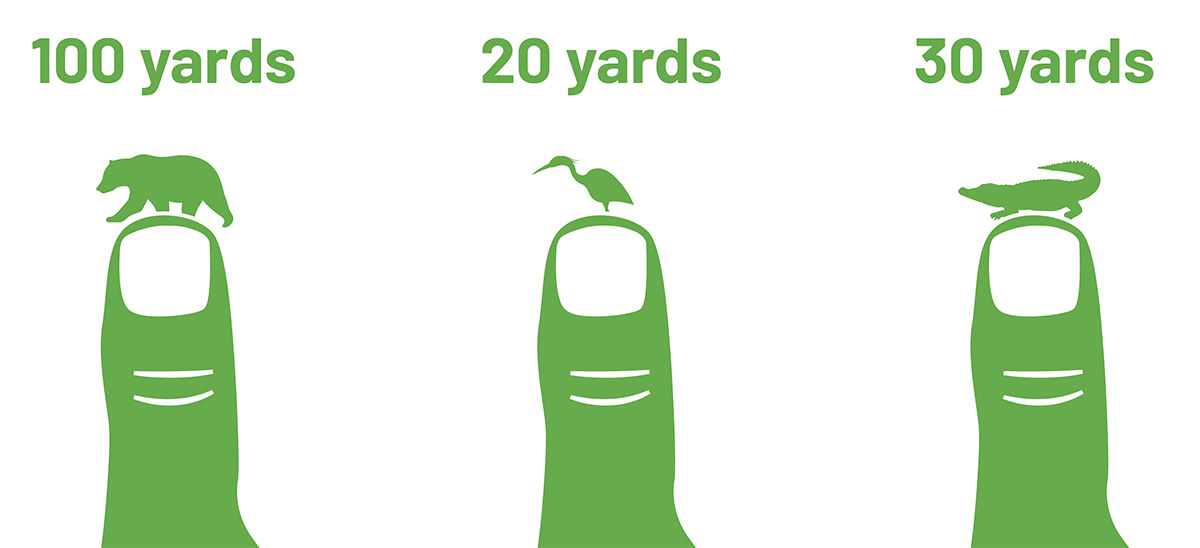
Never approach wild animals to touch or feed or entice them to come closer. It’s dangerous for us and them. Wild animals may bite and injure people who try to feed them. Feeding by humans can alter animals’ natural behavior, making them aggressive and dependent on handouts. Ultimately, it can be a death sentence for an animal if they become a dangerous “nuisance” and must be removed. In Florida, it’s against the law to feed bears, coyotes, foxes, raccoons, pelicans, alligators, crocodiles, sandhill cranes, and wild monkeys.
That candy wrapper that falls out of a pocket or plastic bottle that blows out of the boat may not seem like a big deal. But trash can be deadly to wildlife that ingests or becomes entangled in it. Plastic pollution like bags, monofilament fishing line, and floating debris is especially perilous. In fact, trash is one of the greatest threats to marine wildlife. Pitch in to solve the problem by reducing your own use of plastics and picking up litter wherever you see it in the wild.
Here’s what to look out for when you’re sharing the shoreline.
Bird Nesting Season Mid-February–August 31
Beach-nesting birds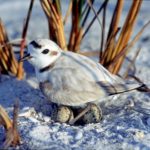 , such as terns and plovers, are struggling to survive in Florida. Shorebirds and sunbathing residents and tourists flock to the same beaches, leaving few quiet undisturbed spaces for birds to rest, forage and raise their chicks. Each nest is critical for these vulnerable bird populations to survive. Look for and respect posted areas. Learn More
, such as terns and plovers, are struggling to survive in Florida. Shorebirds and sunbathing residents and tourists flock to the same beaches, leaving few quiet undisturbed spaces for birds to rest, forage and raise their chicks. Each nest is critical for these vulnerable bird populations to survive. Look for and respect posted areas. Learn More
Turtle Nesting Season May 1 – October 31
Sea turtles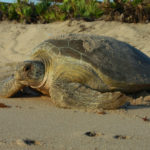 are ancient creatures that have nested on local beaches for millions of years. Today, light from waterfront properties can disorient nesting female turtles and their young, which emerge at night and rely on dim natural light to find the sea. Also, beach furniture, trash, sandcastles, and holes left on the beach overnight are obstacles that impede sea turtles from nesting and hatchlings from reaching the sea. Learn More
are ancient creatures that have nested on local beaches for millions of years. Today, light from waterfront properties can disorient nesting female turtles and their young, which emerge at night and rely on dim natural light to find the sea. Also, beach furniture, trash, sandcastles, and holes left on the beach overnight are obstacles that impede sea turtles from nesting and hatchlings from reaching the sea. Learn More
Here’s what to look out for when you’re boating and fishing.
Dolphins and Manatees

Sarasota Bay’s long-term resident community of over 170 wild dolphins is vulnerable to serious and even fatal injuries from interactions with boats and fishing gear. Unfortunately, some dolphins have become accustomed to people and may approach your boat. Help keep our dolphins wild and safe by keeping your distance and reeling in your fishing line. Learn More
Manatees, like dolphins and whales, are legally protected from harassment and harm. These slow-swimming marine mammals are often injured and killed by collisions with boats, and imperiled by loss of the underwater seagrasses that are their primary food. Take it slow and watch out below. Learn More
Seagrass Meadows
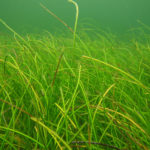
Seagrass meadows found in our shallow-water bays teem with life that sustains turtles, manatees, crabs, shrimp, and juvenile fish. Running aground in a shallow seagrass bed can ruin more than just your propeller. Be seagrass safe. Learn More
WATCH: Seagrass Safe Boating
Ethical Angling
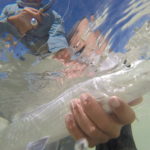
With more anglers and better equipment available, ethical fishing is essential to maintaining Florida’s reputation as the fishing capital of the world. Protect our valuable fish stocks for generations to come by limiting your catch to what you can eat, following fishing regulations (download the app), reeling in and disposing of fishing line, and taking precautions to ensure catch-and-release fish survive. Learn More
WATCH: Browse FWC’s Library of How-To Fishing Videos
Here’s what to look out for when you’re hiking, biking, and camping.
WATCH: Wildlife StealthCam courtesy of Jacob Klasinski, Sarasota County Parks Trail Specialist.
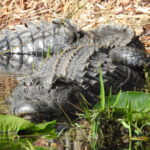
Wildlife sightings out on the trail are an exciting experience. Staying mindful of the basics, like not attempting to approach or feed wild animals, keeps everyone safe. To avoid surprise or dangerous encounters, stay on trails, swim only in designated swimming areas during daylight hours, keep pets on a leash and away from the water, and secure food and trash in sealed containers.
WATCH: Browse FWC’s Library of Living With Wildlife Videos to learn how to handle encounters with alligators, bears, coyotes, and more.
Cost: Free
As nature lovers, we care deeply about the well-being of wildlife and their habitats and want to help when we see wildlife in distress. But the basics of wildlife awareness still apply. Sick and injured animals can act unpredictably and aggressively and can transmit disease to humans and pets. It’s normal for many young animals to spend time alone while their parents forage or keep a watchful eye from a distance, so a baby animal alone is not necessarily abandoned and in need of rescue. Intervening can cause more harm than good. The best thing you can do to help is to keep your distance and alert licensed professional responders.
For Protected Species
(manatees, dolphins, whales, sea turtles, Florida panthers, and black bears)
For Seabirds
Hooked a bird? Don’t cut the line. Slowly reel it in, remove the hook, and release carefully following these steps. If the bird has swallowed a fishing hook or is severely injured, call Save Our Seabirds or a nearby responder.
For Fish Kills
For Other Wildlife
Local, licensed wildlife rehabilitators can expertly assist with many types of injured, sick or orphaned wildlife. First make sure the animal needs help.
Download FWC’s Reporter App on your smartphone or tablet for convenient reporting of all types of wildlife sightings, emergencies, or violations. Apple Store.
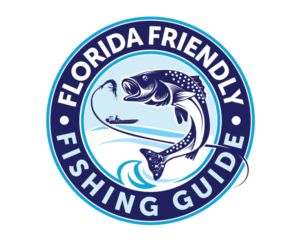
This online certification course teaches science-based techniques for sustainable boating and fishing that minimize the environmental impact of fishing. Florida Friendly Fishing Guides commit to preserving the future of Florida’s fisheries and providing a richer fishing experience for their clients through their angling expertise and environmental stewardship.
Find out what’s happening and join in with our comprehensive community events listing.
Volunteers are needed to plant shorelines, restore clams, survey seagrass, monitor turtle nests, survey birds, look for horseshoe crabs, remove invasive plants, and more to help protect and restore wildlife and their habitats!
Blog series, webinars, and resources that take you on a journey of discovery with local wildlife expert Dr. Katherine Clements
Any of the following symptoms might indicate an animal in distress:
If you come across any of these signs, or if you’re not sure if an animal is in distress, it’s always best to call the experts.
Most volunteer experiences, like being a docent/guide or participating in monitoring or rescue, require some training. The good news is you don’t need a degree in wildlife biology. Many organizations provide the training you need for free. For more involved volunteer positions, organizations also typically ask for a consistent and longer-term time commitment.
It’s always a bad idea to feed wildlife, even if you are offering healthy or natural food. Human food, even if it’s considered healthy, may not be part of the natural diet of that animal and cause nutrition problems. Feeding animals changes their behavior and may make them reliant on human sources of food and less able to survive on their own. Animals can also lose their fear of people and approach or beg. This can result in harm to people or to the animal (e.g., boat strikes, fishing hooks, car collisions). Sometimes animals that become habituated and comfortable with human contact because of feeding are ultimately removed and euthanized. As they say, “a fed gator is a dead gator.” Feeding sites that attract many animals may become hotspots for disease, parasites, or fights. Watch out for accidental feeding, too. Leaving pet food outside, failing to secure household garbage or dumping fish scraps can create all the problems listed above. However, the small exception to this rule is birdfeeders. They can be beneficial or harmful depending on how and where you maintain them. Learn more on optimizing birdfeeders from Audubon. Overall, the most natural food you can offer birds and wildlife comes from adding native plants to your landscape.
Submit your Nature-related question to local experts. If selected, they will answer and feature your question on our FAQ. Not all questions will be answered.
Mind if we stay in touch?
We'll send you our free Toolkit Quick Reference Guide.
We'll never spam you or share your info. Unsubscribe at any time.
This site protected by reCAPTCHA and the Google Privacy Policy and Term of Service apply.
©2024 Science and Environment Council of Southwest Florida | Site by Chariot.